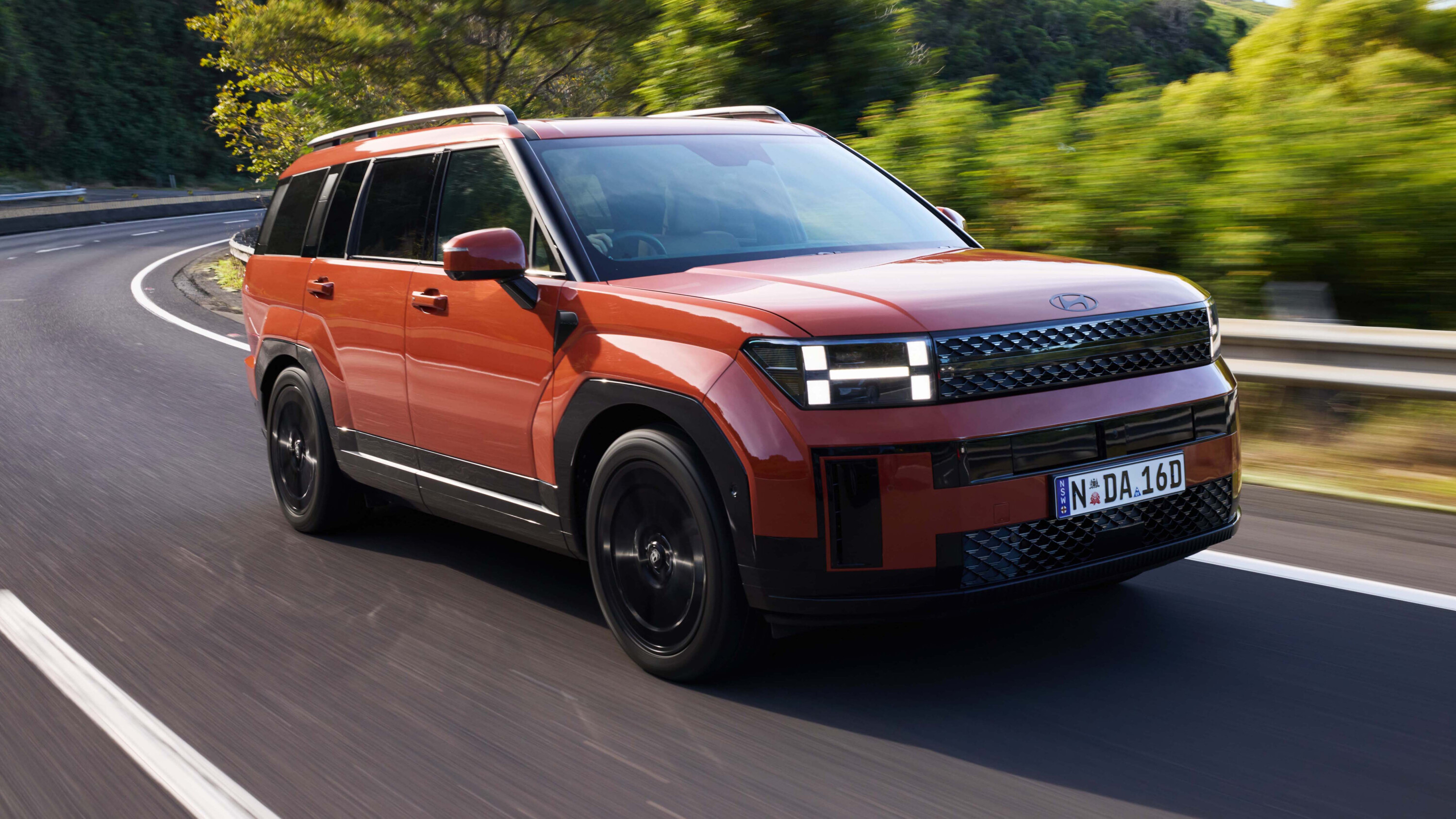Score breakdown
Things we like
- Spacious and practical cabin
- Bold styling
- Stacks of safety kit
- Decent fuel economy
Not so much
- Price is getting up there for Calligraphy model
- Neither the quietest nor the smoothest car in its class
- Lazy response in Eco mode
The previous four generations of Hyundai Santa Fe shared one thing in common. They were all very easy to damn with faint praise. Really not bad. There or thereabouts. A lot of metal for your money. That sort of thing.
At no point did somebody dream of owning a Hyundai Santa Fe. It achieved popularity almost by a slow, creeping type of inoffensive overall competence.
You discounted everything else and after that process of elimination, the Santa Fe was the answer you arrived at to fit the family transport brief. With the fifth-generation version, that’s about to change. The Santa Fe has developed a persona all of its own.
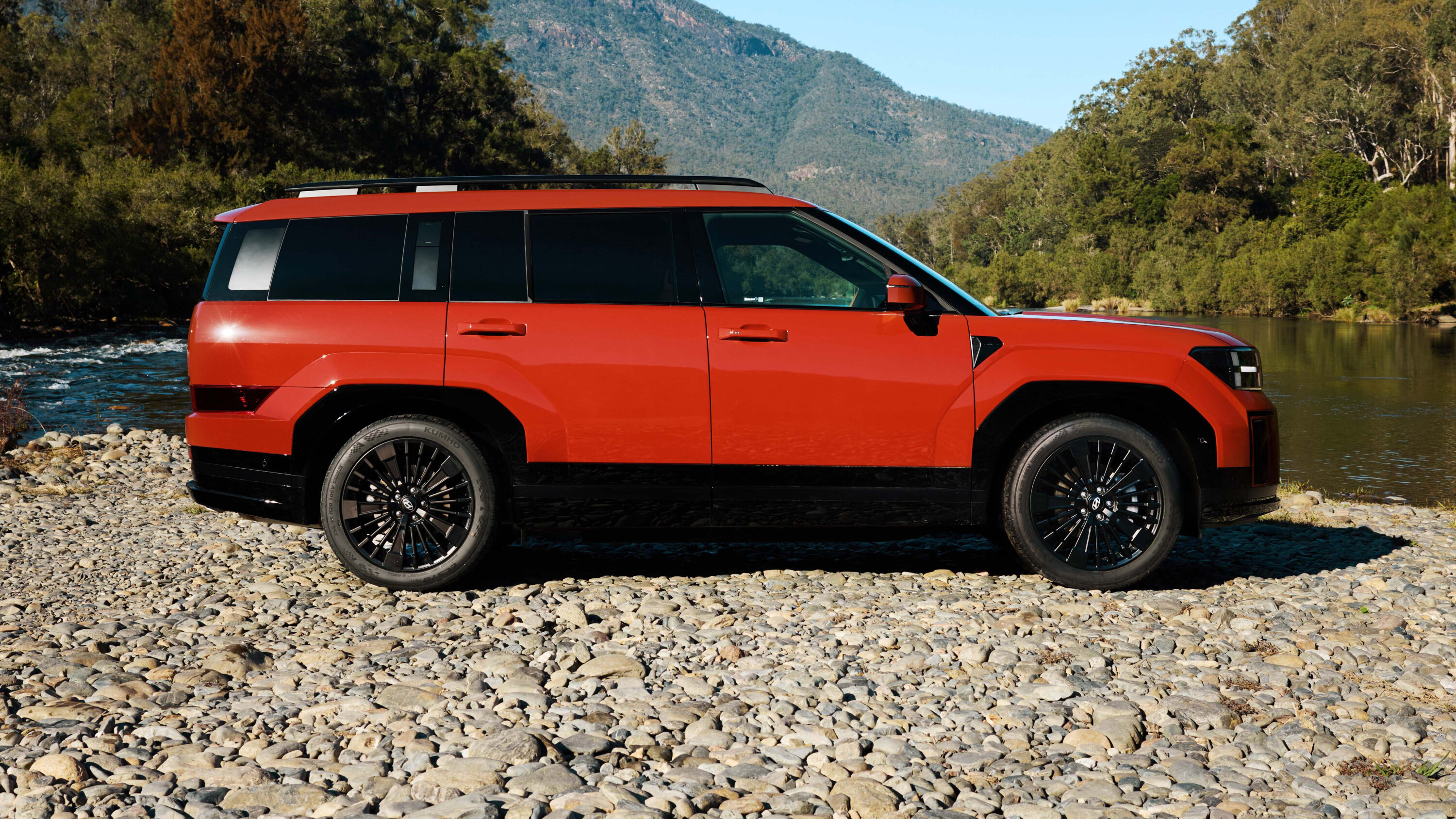
Before we go any further, you might well have come to a conclusion on whether that’s a good or bad thing.
The styling – especially around the rear end – does have the capacity to divide opinion. Spend a little more time with the Santa Fe and it tends to become a non-issue. You’ll love this car for what it can do and how it will fit in with your family’s needs without succumbing to lowest-common-denominator blandness.
Hyundai’s a company on a heck of a roll at the moment, and the Santa Fe reflects that swagger.
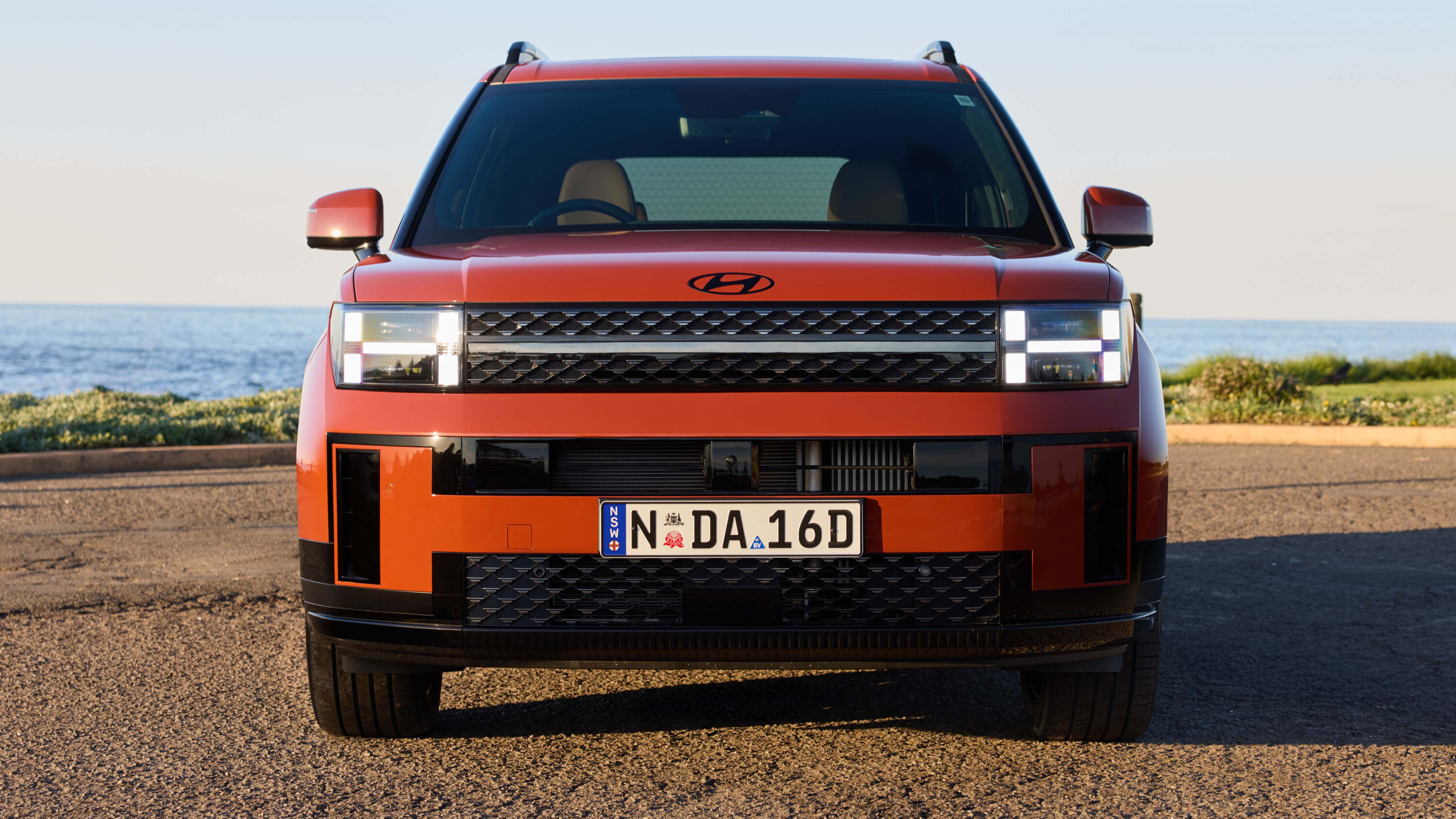
JUMP AHEAD
- How much is it and what do you get?
- How do rivals compare on value?
- What’s it like to drive?
- Interior comfort, space and storage
- How much fuel does the Hyundai Santa Fe 1.6T-GDi use?
- How safe is the Santa Fe?
- VERDICT
How much is it and what do you get?
On the face of it, the new Santa Fe looks to charge you more and deliver you less, which seems very 2024.
Whereas you could purchase the old car with a grunty 3.5-litre 200kW V6 for a sniff over $46k, this time round the range starts at $55,500 and for that you get a 172kW 1.6-litre four under the bonnet. It seems for all the world like the most textbook case study in shrinkflation.
That buys you the entry level front-drive car in the three tier range, and an all-wheel drive version is on offer for $58,500. The Elite and the Calligraphy models that sit above are all-wheel drive only and retail at $65,000 and $75,000 respectively, so there are some fairly hefty steps up through the range for models that are ostensibly mechanically similar.
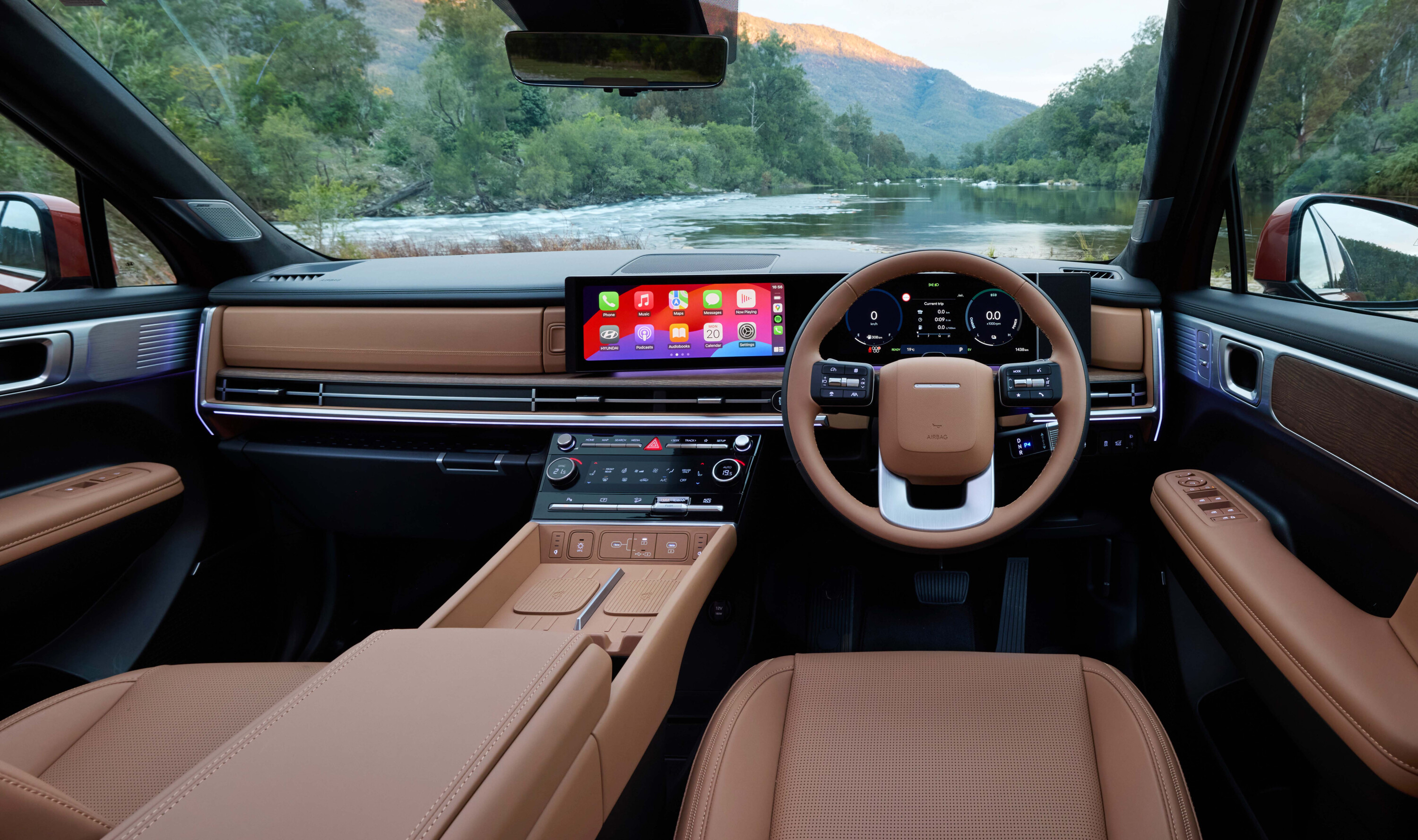
Hyundai claims that buyers aren’t asking for diesel engines and chunky towing abilities in this class. What they want are hybrids and their blend of refinement and modest fuel bills.
On that score, Hyundai has certainly delivered. A 2.5-litre non-hybrid version will be along later in the year, but for the time being, the 1.6T-GDI powerplant is the sole engine being imported. Thankfully it’s a good ‘un. But before we get into the oily bits in any further detail, let’s take a step back.
The Minecraft design language is a radical departure from the smooth pebble forms of the previous Santa Fe and while the front end is distinctive and attractive (check the different grille treatments for the base and Elite versions versus the ritzy Calligraphy trim), the rear end initially looks oddly heavy, that low-mounted strip of tail lights giving it a lugubrious effect.

I wonder how well resolved it would look with vertical strip tail lights. Maybe a little too much like a Land Rover product and, let’s face it, nobody wants a spittle-flecked phone call from Gerry McGovern.
There are already some fairly Gaydon-like cues, whether it’s the low-profile full width tailgate badging, the floating glasshouse and the brutal cubism of the new Defender. If you were to delete the badging and ask a sample set of people who it was made by, perhaps Toyota and Ford might also float to the surface.
While we can argue back and forth on whether it’s a handsome car (for my money, it is), there’s no arguing with the tape measure. This shows that, at 4785mm long, the Santa Fe has grown by 45mm in length.
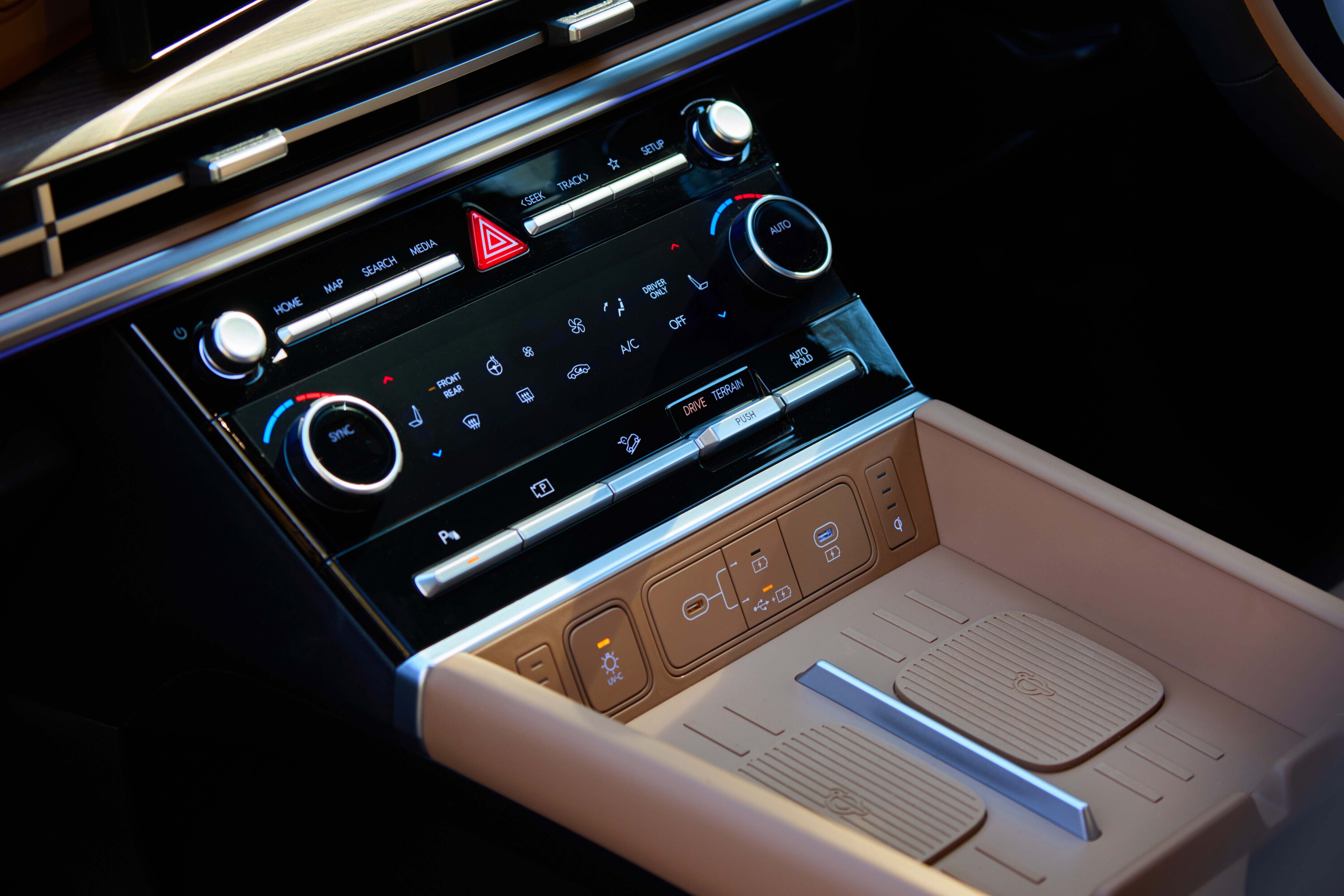
The width remains identical, but there’s an extra 60mm of height and, importantly for a three-row vehicle, wheelbase has extended by another 50mm.
Compared to the even larger Palisade, second row legroom for the Santa Fe is 1055mm where the Palisade measures 1077mm, but the Santa Fe offers 11mm more headroom back there.
Hyundai offers a palette of 10 colours for the Santa Fe. Only two (Creamy White mica and Terracotta Orange solid) are zero cost but the option prices of the premium metallic and mica paints are a modest $695 uptick and the matte finishes (Creamy White and Earthy Brass) are $1000 extra, which is still quite reasonable compared to many other manufacturers.
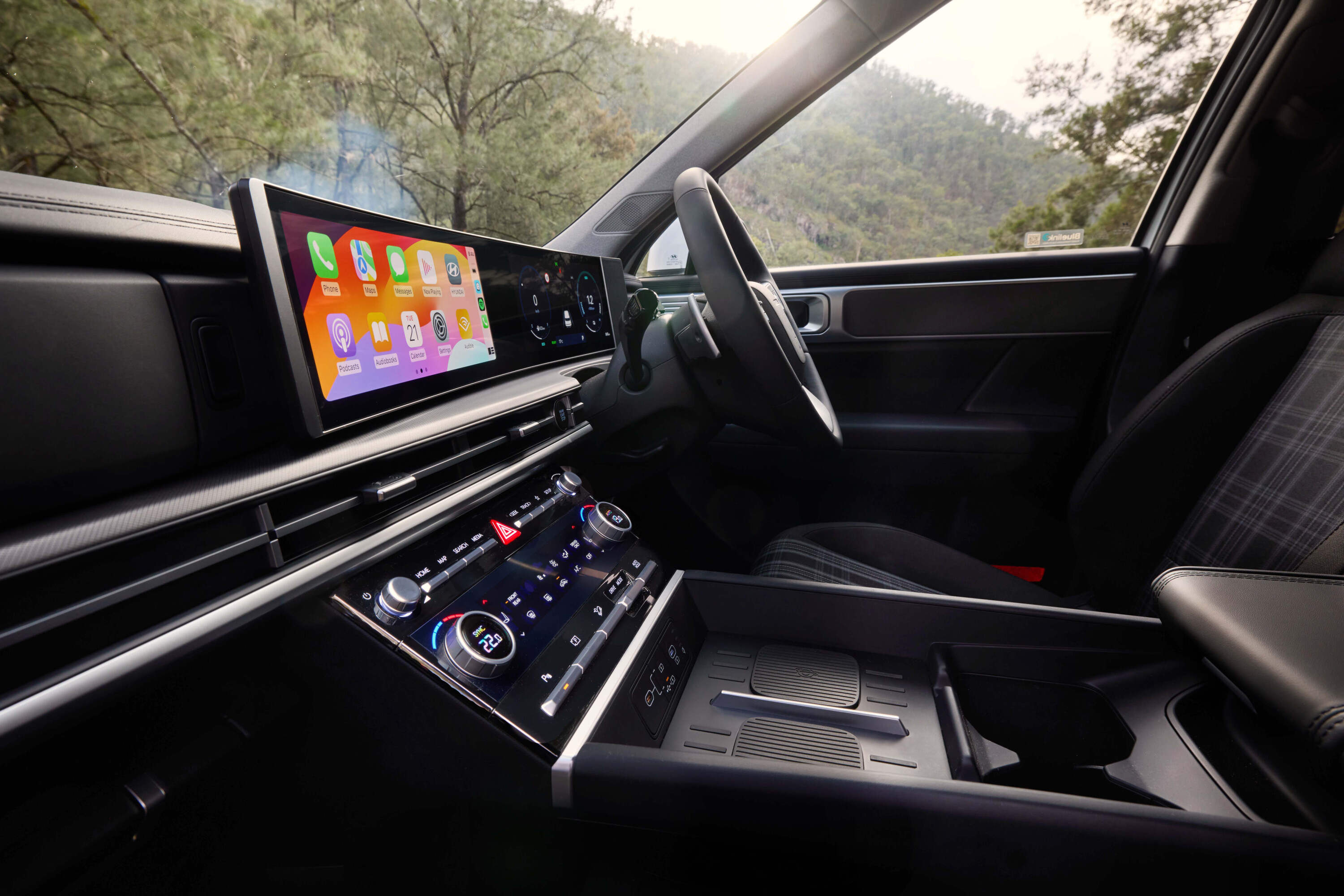
How do rivals compare on value?
Prices are still a nick above that of our favourite in this class, the Kia Sorento, but it’s worth bearing in mind that this is for a hybrid version of the Santa Fe, whereas, to date, there are no hybrid offerings of the Kia family hauler.
The 206kW 2.5-litre Santa Fe, which arrives later this year, will be a more like-for-like comparison for Sorento pricing.
Otherwise, the Hyundai, at $55k-$75k, looks decent value against the Toyota Kluger hybrid($58k-$80K), but its most formidable rival on the value front is likely to be the Mitsubishi Outlander PHEV, which offers the attraction of plug-in hybrid versatility and costs between $64K and $72k.
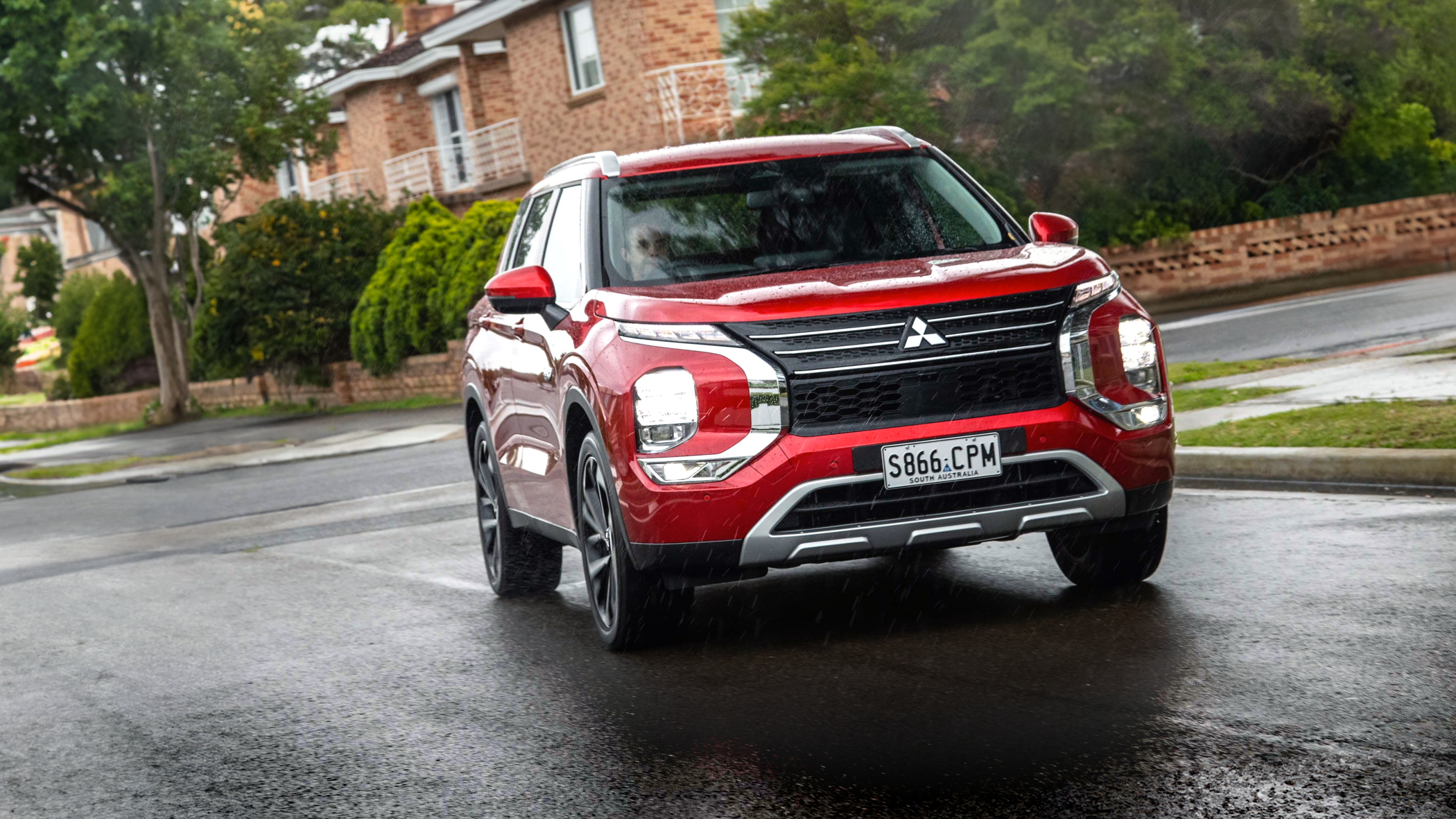
What’s it like to drive?
Switch the Santa Fe into its Eco mode for the freeway leg of our journey and it feels a little anaesthetised.
It defaults to 1900rpm on the rev counter whenever possible with a prod of the throttle lifting it rather lethargically to 2500rpm before it deems another upshift is in order. When pressed into action the 1.6-litre engine is surprisingly vocal and there’s a fair bit of road noise transferred into the cabin.
The ride’s not bad, but it’s clear that this isn’t one of those Hyundais that has benefited from some local suspension tuning love. It lets you know what’s going on beneath you. It’s never harsh or terse, but neither does it deliver the sort of pillow-topped ride that some of its better rivals (or, indeed, its stablemates) can deliver.
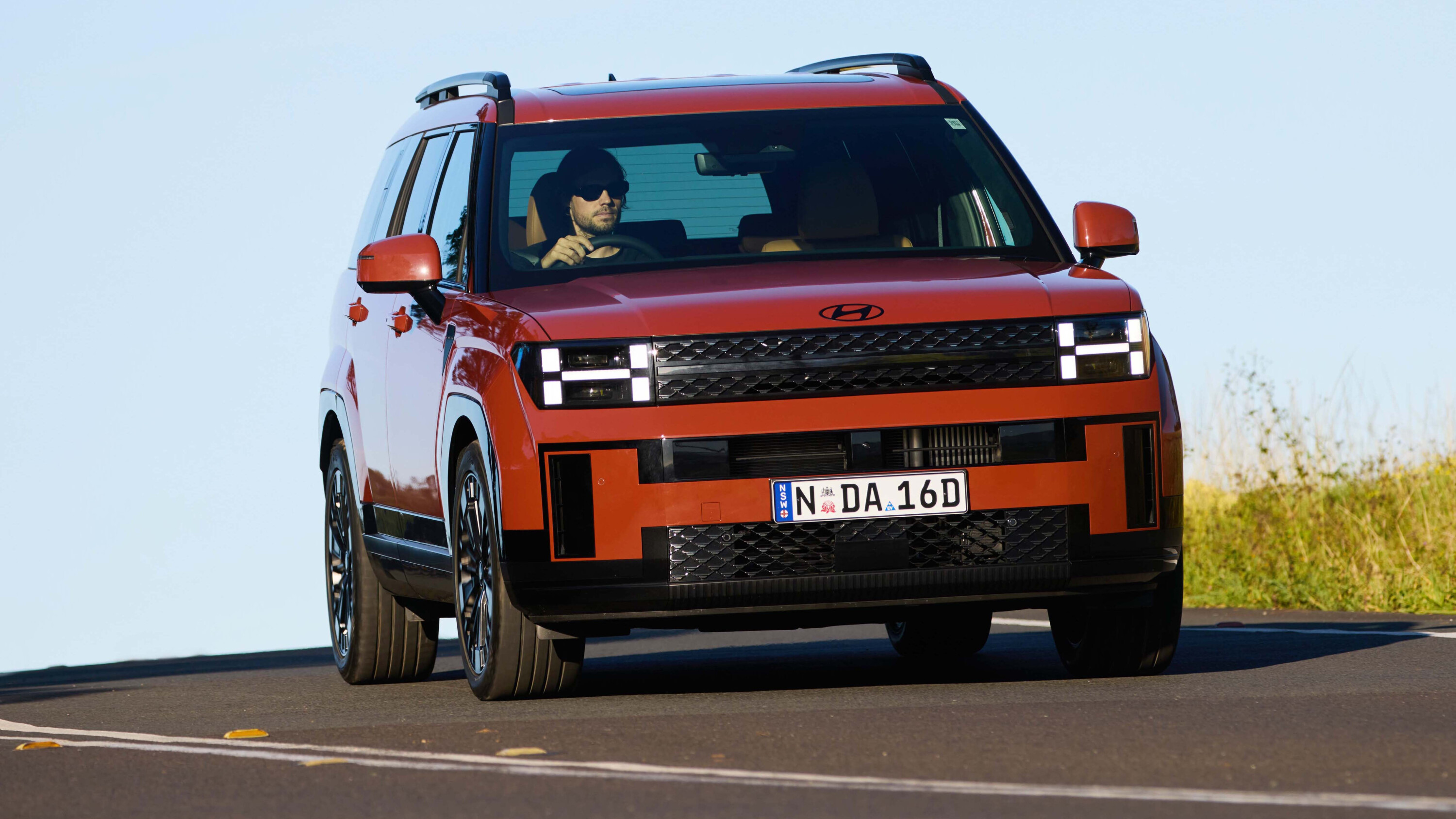
As the roads get twistier, it’s clear that there is some real talent in this chassis. Grip is strong through corners, the Kumho Ecsta PS71 tyres(255/45 R20 all round) serving up plenty of adhesion.
The steering has some welcome heft to it in Sport mode and the Santa Fe is easy to place, offers decent visibility and body control is good. The handover between the regenerative and friction braking is also very good indeed.
Like all current Hyundai products, there are a myriad of maddening warning chimes sounding all the time. Even when the car is travelling at just below the speed limit (checked via a satellite data logger) the four chimes of the overspeed warning will repeatedly sound and it can be distracting to switch that system off when on the move.
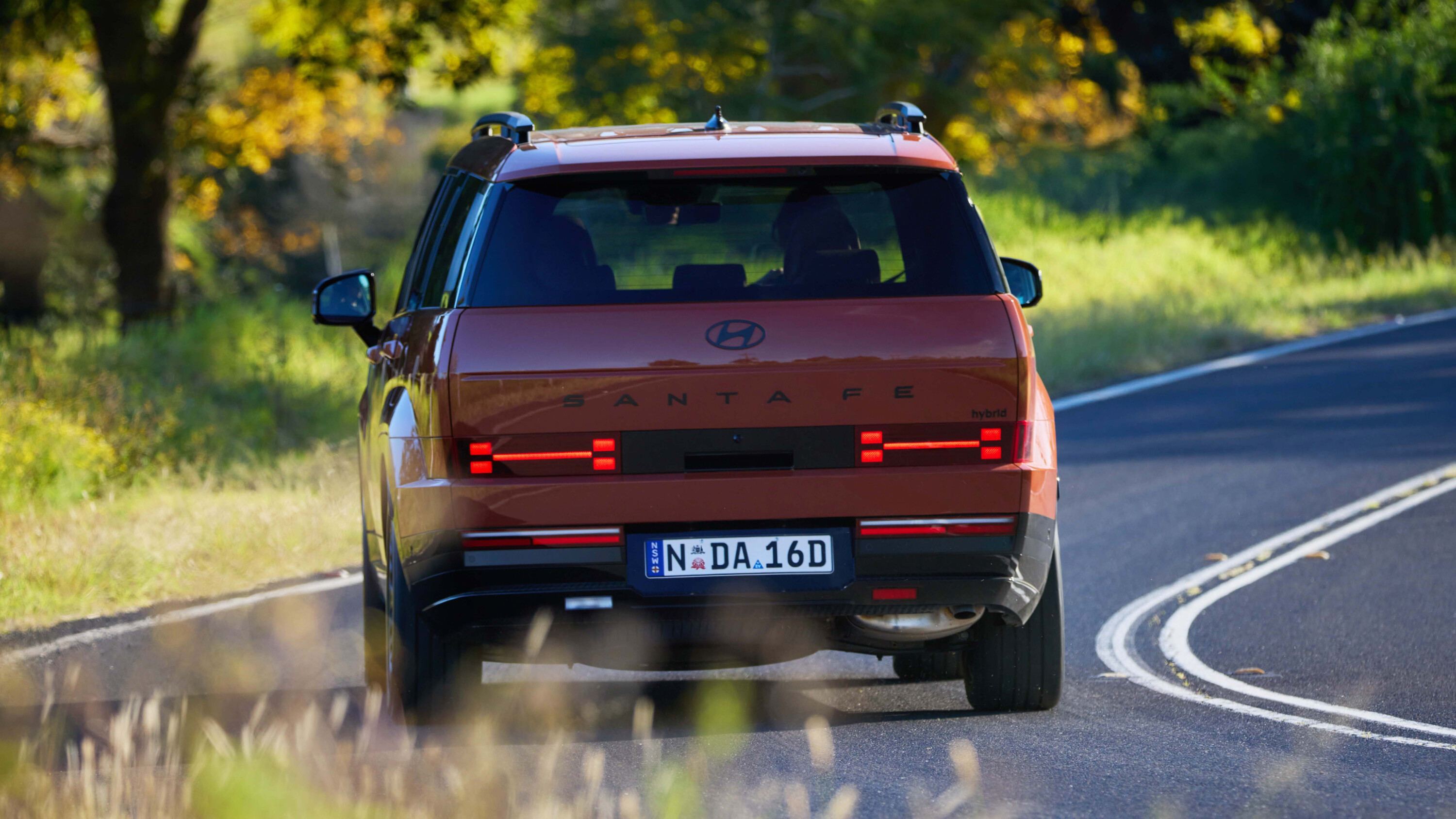
I’d expected to be thoroughly underwhelmed by an engine this small propelling two tonnes of three-row SUV up the road, but it’s a smart, economical choice that’s more than adequate for the task.
The 1650kg braked towing capacity might not be hugely impressive but vehicles in this class are family cars first and foremost and not heavy-duty leisure haulers.
The six-speed automatic gearbox does a reasonable job of keeping the engine on the boil in Sport mode and, when switched into the correct mode, you can use the wheel-mounted paddle shifters to ping up and down the box if required.
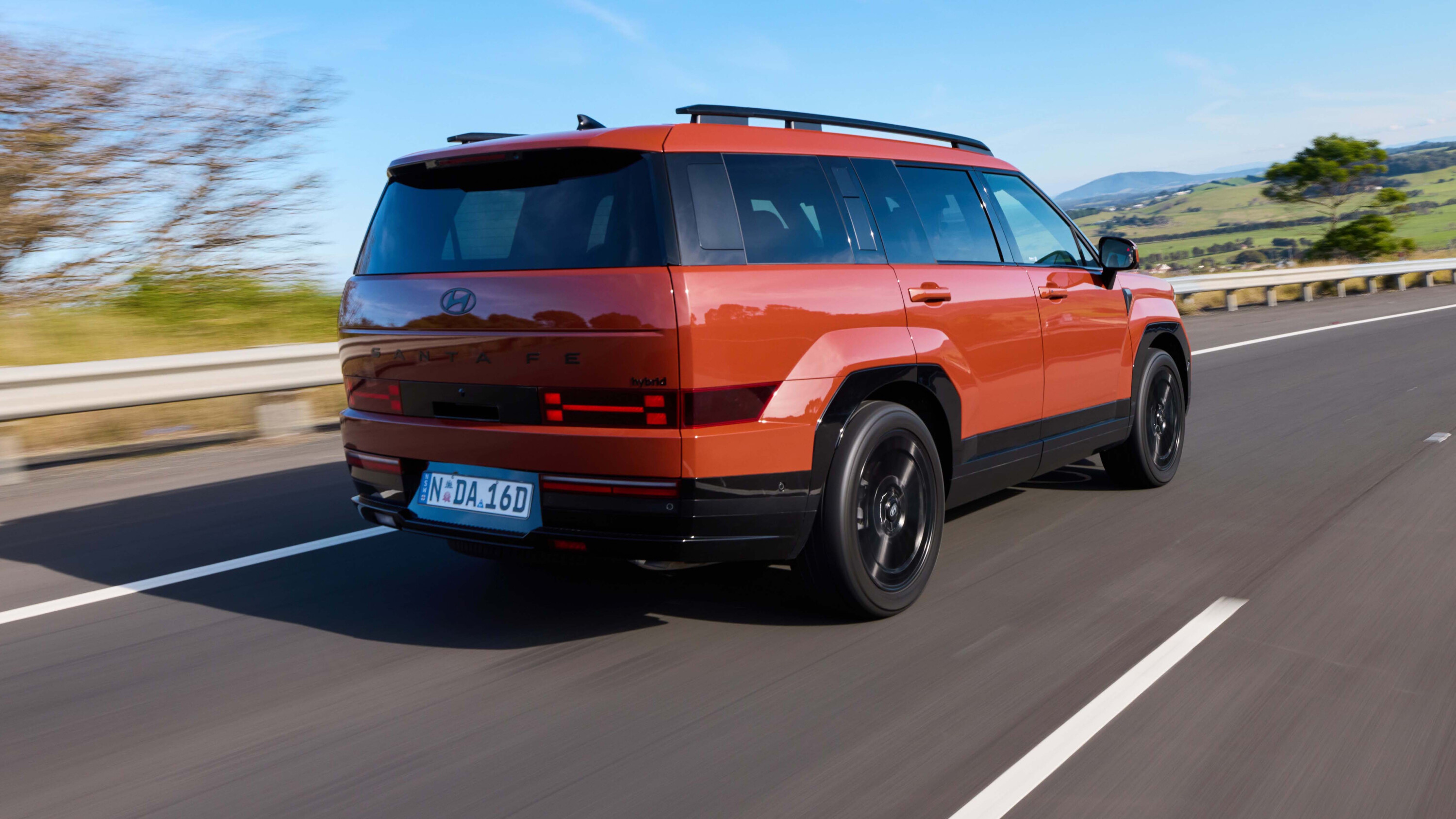
The changes aren’t as quick as a dual-clutch but it seems the right transmission for the typical use case of the Santa Fe.
Below 2500rpm, it does suffer some Eco mode lagginess manifested via a doughy-feeling throttle that will only be exacerbated if the vehicle’s heavily loaded, so bear that in mind when planning an overtake.
We didn’t get the chance to head off road, but there are terrain modes to help the all-wheel drive system optimise traction. The ground clearance of 177mm and the road-oriented tyres are likely to prevent too much in the way of adventures off the beaten track, but in case you were interested, the approach, breakover and departure angles are 17.4, 20.9 and 15.3 degrees respectively.
If any of the terms in this section have left you scratching your head, these articles will help bring you up to speed!
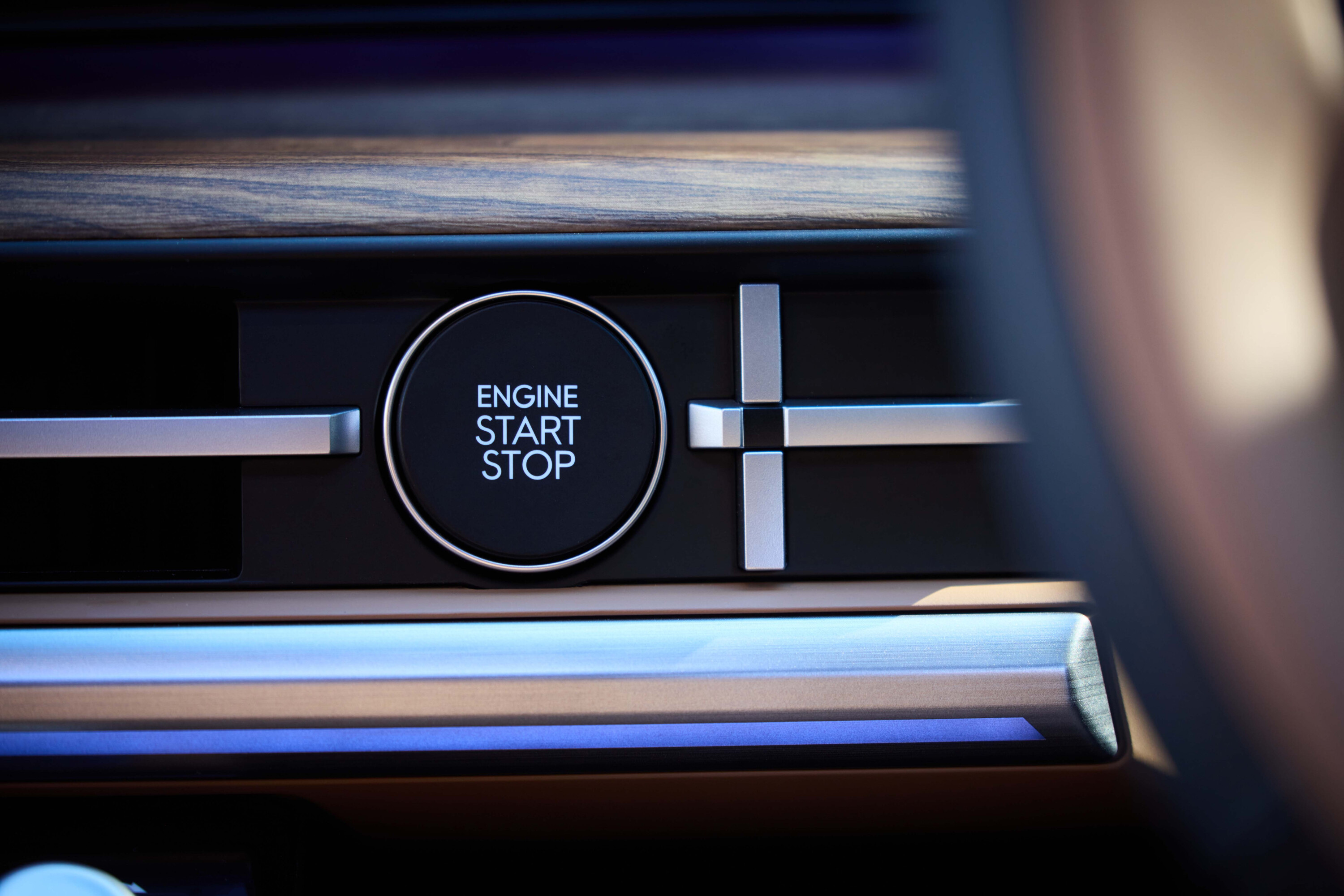
- What is a Powertrain or Drivetrain?
- Power vs torque
- Car suspension explained
- Automatic transmissions (‘gearboxes’) explained
- Chassis control systems explained
- Car vs Ute vs SUV: How the vehicle you buy should guide the way you drive
- What is the WLTP emissions and range test?
Here’s a bit of vehicle testing tradition for you. It’s usual to park yourself in the base model first, get a feel for what the honest-to-goodness bare bones model is like first, and then sample the upper-spec versions afterwards.
I got what I was given, and in this case it was the top-spec Calligraphy version, dressed in pale leather, mirroring a beautiful pale grained finish for the dash infills.The dash is dominated by the Panoramic Curved Display, which houses twin 12.3-inch digital cluster and infotainment screens.
The Calligraphy also features some upmarket gadgets like first row relaxation seating, a dual-pane sunroof, a digital centre mirror, the options of captain’s chairs in the second row (for a six seat configuration) and a UV-C sterilisation tray that nukes bacteria from personal items like phones and keys.
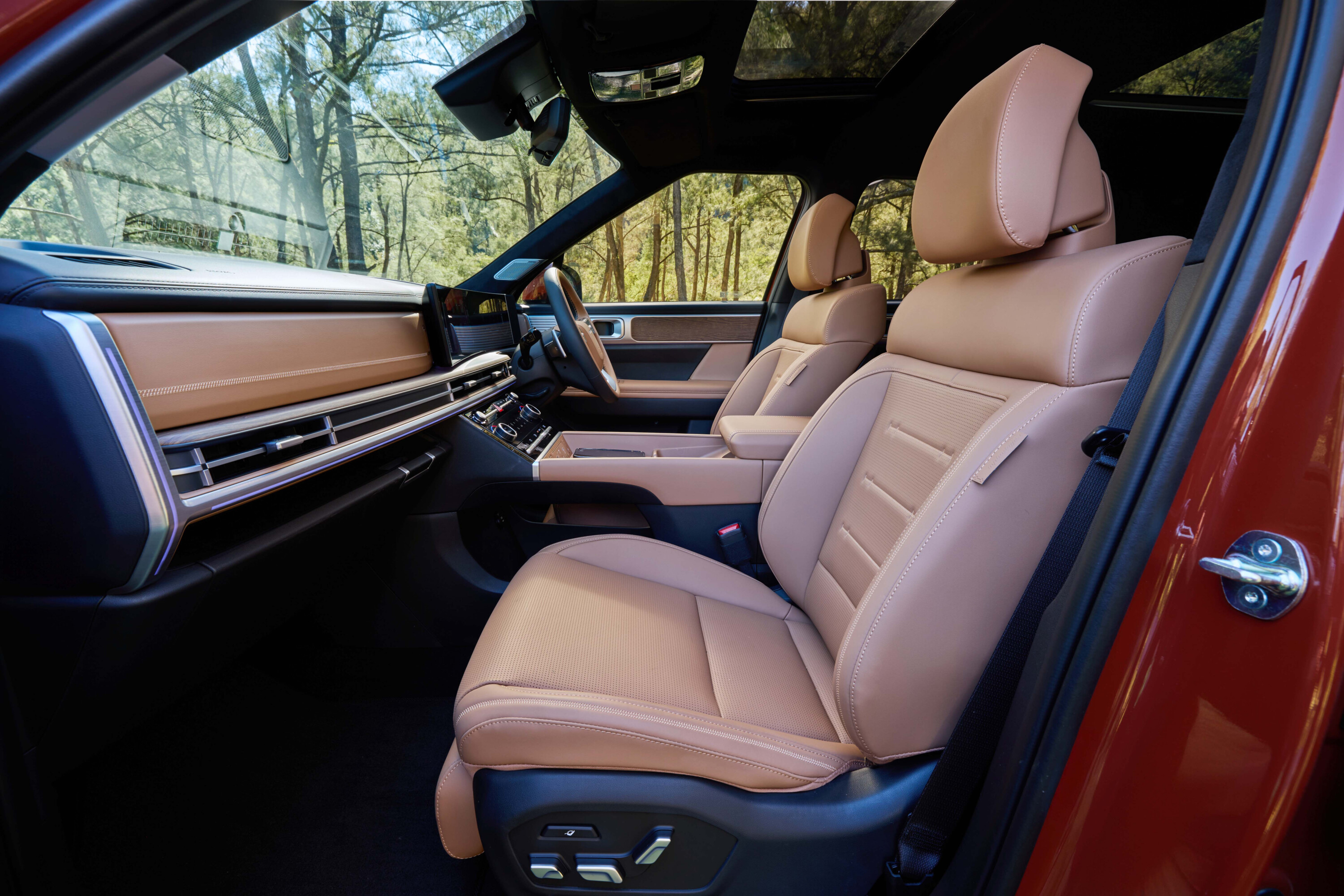
Sensibly, Hyundai has blended analogue and digital controls. The easy access ventilation controls are welcomed as are the easy-to-fathom wheel-mounted controls for the stereo, phone and adaptive cruise control.
The captain’s chairs are wonderfully comfortable, with plenty of legroom and a decent amount of recline. It’s like being in a TGV and watching France whistle past outside. They do come with some caveats though. Obviously you will no longer be able to seat seven, and the ultimate carrying capacity is compromised by the fact that they don’t fold flat to the floor like a second row bench.
Still, if you’ve got a couple of older kids and don’t need a huge cargo carrying capacity spending $1000 on these seats would doubtless make you very popular parent.
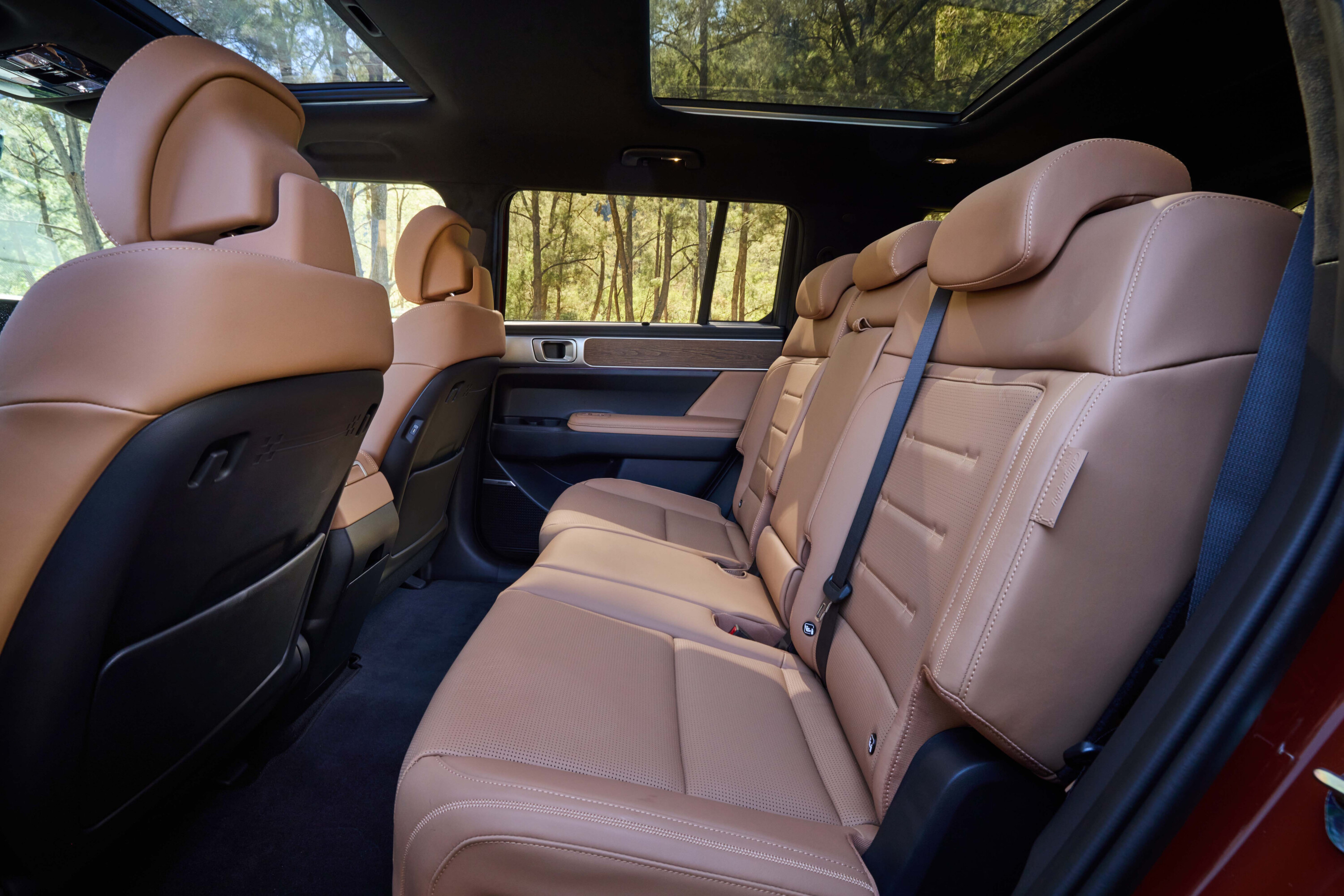
Up front there’s wireless Apple CarPlay and Android Auto as well as a pair of wireless charging pads, which is a very neat touch. Another feature that I loved was the twin-hinged centre box, which means that those in the front and the second row can both access it with ease.
Jumping from the Calligraphy into the base model brings a more utilitarian feel to the seat and dash fabrics, but otherwise, it feels no hardship at all. Things you will miss? There’s no native sat-nav in the base model, so you’ll be relying on your smartphone mirroring.
There’s also a stereo that’s a bit less bass-rich than the Bose item fitted to the mid-range Elite and the Calligraphy flagship. Bluelink over the air updates are also a feature of the two higher spec variants.
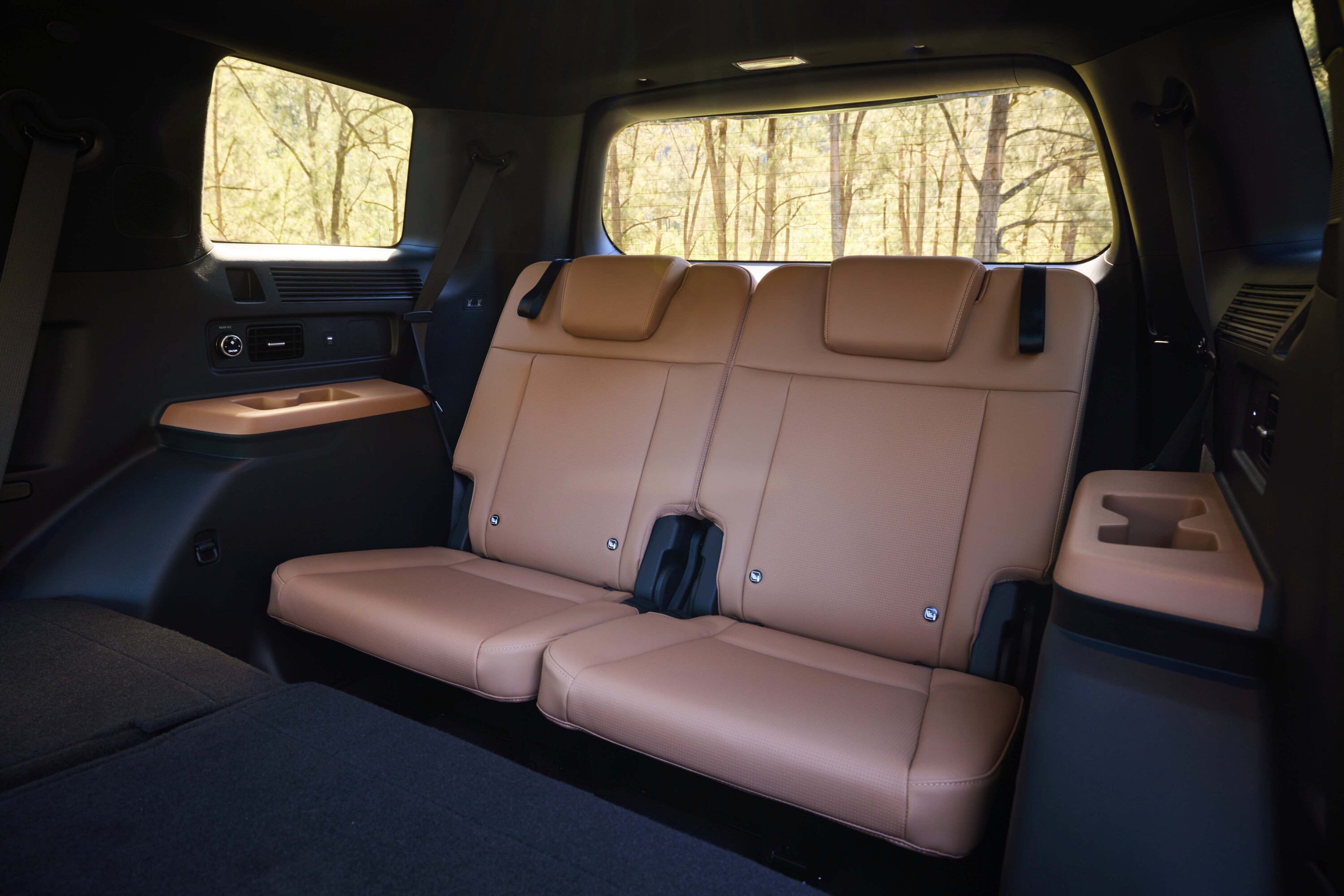
All Santa Fe variants get a powered tailgate which opens to reveal a very low floor (the full-sized spare wheel is thoughtfully slung beneath the vehicle).
The third row seats are straightforward to fold and access isn’t too bad, and there’s up to 10 degrees of backrest recline available. Those in the rear do get their own ventilation controls, USB-C outlets and dual cupholders on each side of the car.
There’s a total of four ISOFIX child seat points and five top tether mounting points. With two rows of seats in position, you’ll get 628 litres of luggage space, but if you fold the second row bench seat, that balloons to a hefty 1949 litres (VDA). Because of the positioning of the rear lights, the tailgate opening is a hefty 145mm wider than the outgoing model.

How much fuel does the Hyundai Santa Fe 1.6T-GDi use?
One of the benefits of a downsized engine is decent fuel economy right? Of course it is.
Hyundai claims an average of 5.6 litres per 100km, but in the real world you often have to work these little engines quite hard to make progress. On a long run, we were averaging 6.2 litres per 100km which is only around 10 percent off the WLTP consumption figure. A 67 litre fuel tank offers decent touring range.
Obviously that fuel usage will increase if you load the Santa Fe up or drive it in more demanding scenarios. The hybrid system is such that it never drives the car purely on electric power alone, but instead augments the 1.6-litre petrol engine to make it feel like a larger capacity unit. There are three user-selectable levels of re-gen for the hybrid battery.
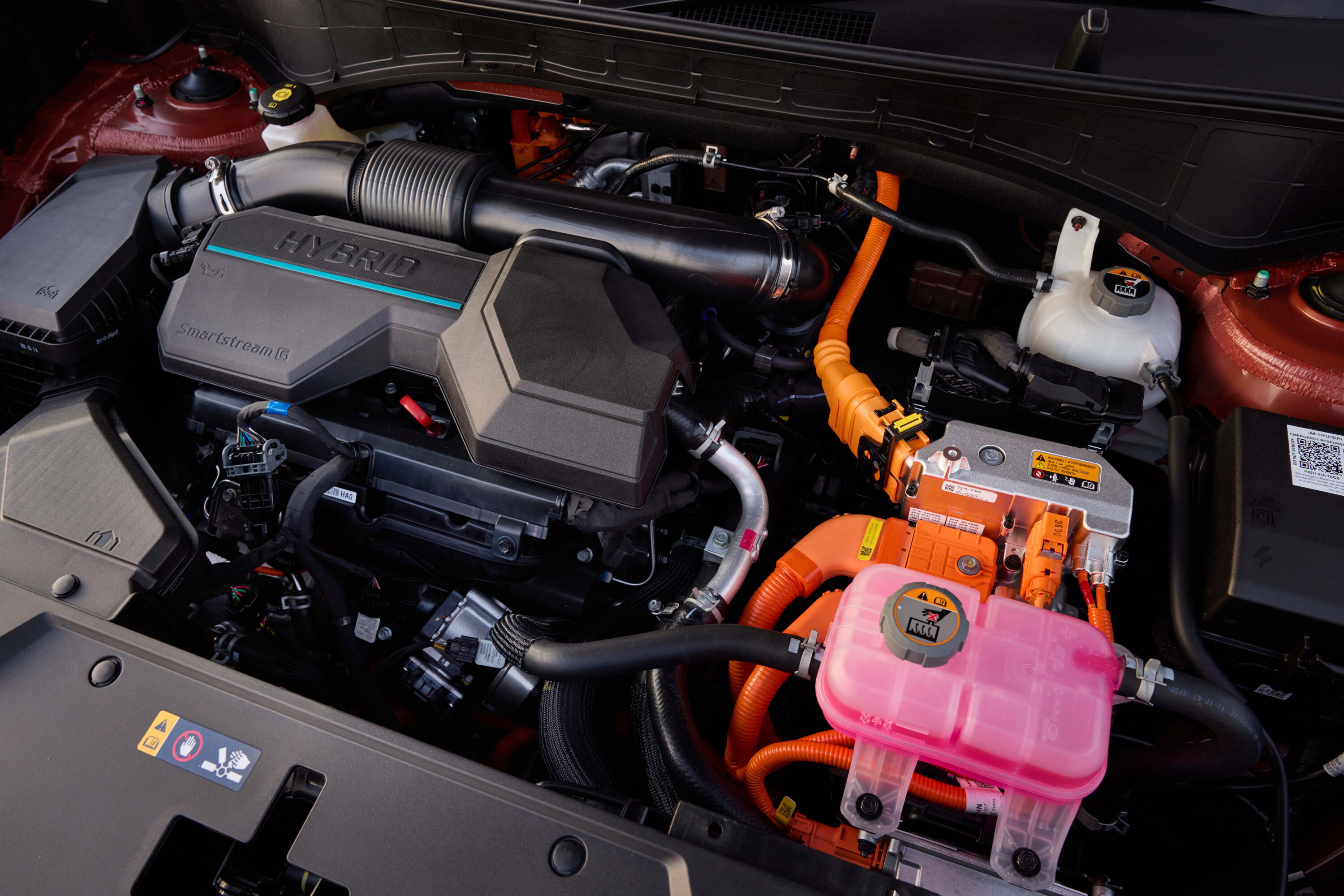
How safe is the Santa Fe?
Hyundai doesn’t have an ANCAP rating for the Santa Fe yet, but it is due to enter the EuroNCAP testing process and we’d be very surprised if it didn’t get the full quota of five stars.
It’s supplied as standard with 10 airbags, comprising driver and passenger airbags, first and second row side thorax and pelvis airbags, a driver’s knee airbag, a front centre side airbag and full-length curtain airbags.
The Santa Fe also benefits from Hyundai’s SmartSense safety suite which includes forward collision avoidance, automatic junction monitoring, lane change monitoring and avoidance, driver steering assist, blind-spot collision avoidance assist, lane-keep assist and safe-exit assist to monitor your blind spot when easing out of a parking spot.
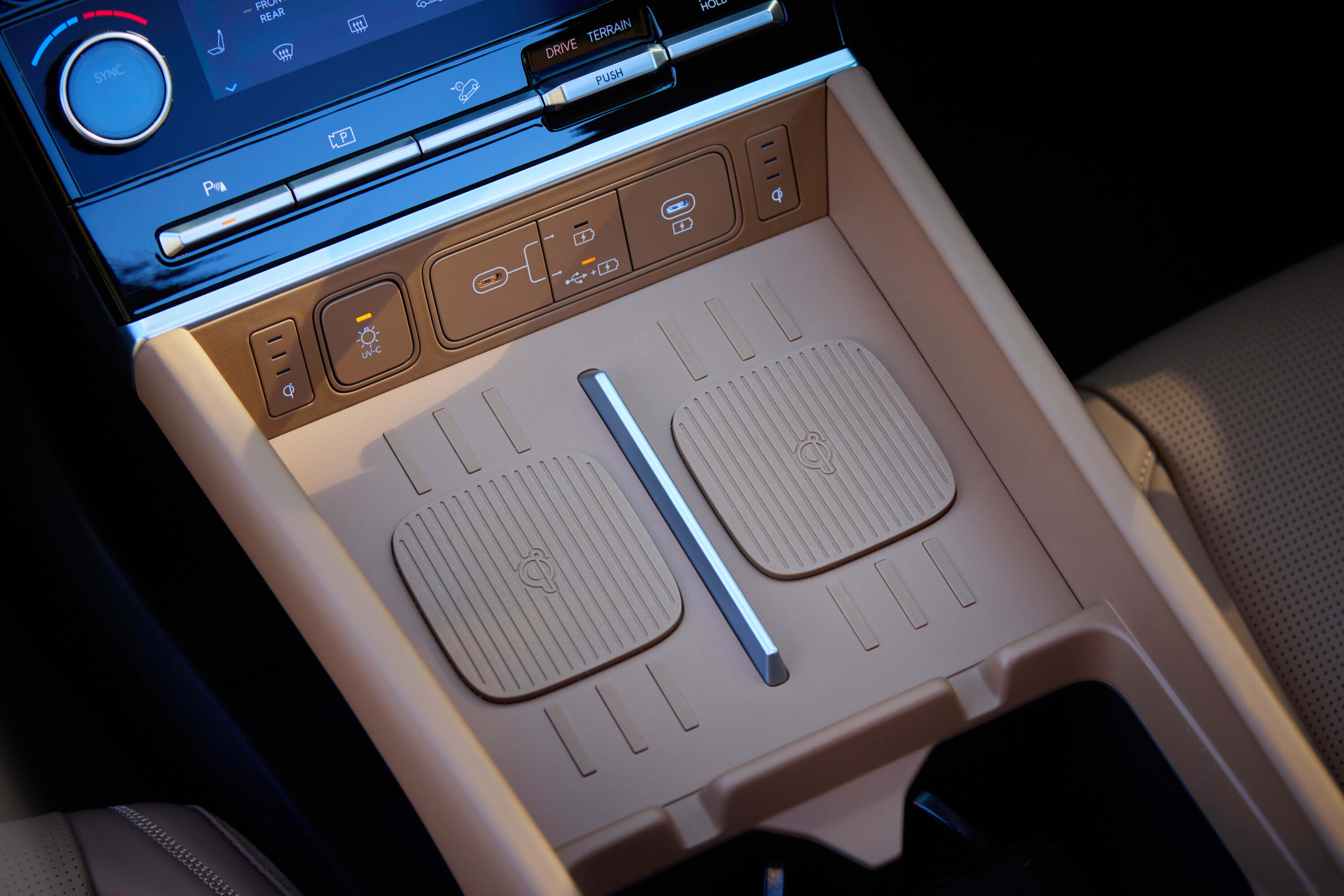
The base Santa Fe is richly equipped with safety systems.
There’s also blind spot view monitor, driver attention warning, smart cruise control which is adaptive and monitors the sat nav to determine safe corner radius speeds, lane centring, and lane following which can monitor the vehicle ahead if the white lines on the road temporarily disappear.
Of course, there’s also a huge array of parking assists and a surround view monitor. You’ll need to step up to the Elite model to get Highway Driving Assist 2 and the nav-based smart cruise control as well as rear occupant alert and remote smart park assist, but otherwise the base Santa Fe is richly equipped with safety systems.

VERDICT
Hyundai has equipped the Santa Fe with virtually everything it needs to be a standout choice in its sector. The depth of engineering and the thoughtfulness that’s gone into executing this family vehicle are genuinely impressive and immediately up to date.
Whether you can live with the severe cuboid styling is another matter altogether. If it jars, give it time because there’s so much about this version of the Santa Fe that’s a monumental leap forward compared to its predecessor.
It’s also one of those rare SUVs where we’d quite happily recommend the base model with no options required. Given that the upticks in price between trim levels are so large, that might seem a slam on (especially) the range-topping Calligraphy and, at first glance, $75k for a 1.6-litre Hyundai SUV does seem a stretch.

Jump inside though, and it’s hard to deny the feel-good factor. Then, when you start casting around for what else that sum buys you in this sector, it’s clear that Hyundai has done its homework.
Indeed, it expects the Calligraphy to account for 50 percent of all Santa Fe orders in Australia with the base model and the Elite trims accounting for 25 percent respectively.
For the first time, the Santa Fe feels like a car you could recommend to family and friends without caveat. They can be the judge of the styling. For so long it’s been a model that’s been somewhat shaded by its once-removed cousin, the Kia Sorento. That no longer feels the case.
Score breakdown
Things we like
- Spacious and practical cabin
- Bold styling
- Stacks of safety kit
- Decent fuel economy
Not so much
- Price is getting up there for Calligraphy model
- Neither the quietest nor the smoothest car in its class
- Lazy response in Eco mode
We recommend
-
 News
News2024 Hyundai Santa Fe pricing and features: Hybrid large SUV detailed for Australia
The new-generation Hyundai Santa Fe large SUV will launch in Australia imminently in three hybrid-only variants, with a $9450 rise over its previous starting price
-
 Reviews
Reviews2024 Hyundai Santa Fe review: New generation driven
Bigger. Bolder. But better? We head to Hyundai’s home market to find out if the latest Santa Fe should have its large-SUV rivals quaking in their boots.
-
 News
News2025 New Car Calendar: All the new cars coming to Australia
Take a look at our list of what is expected to launch in Australia in 2025 – plus those we might not see locally just yet


